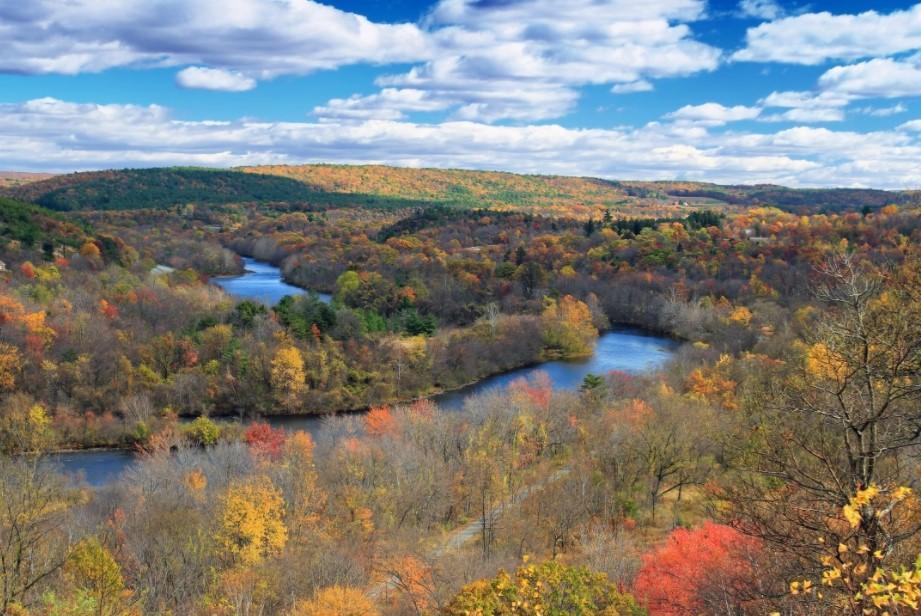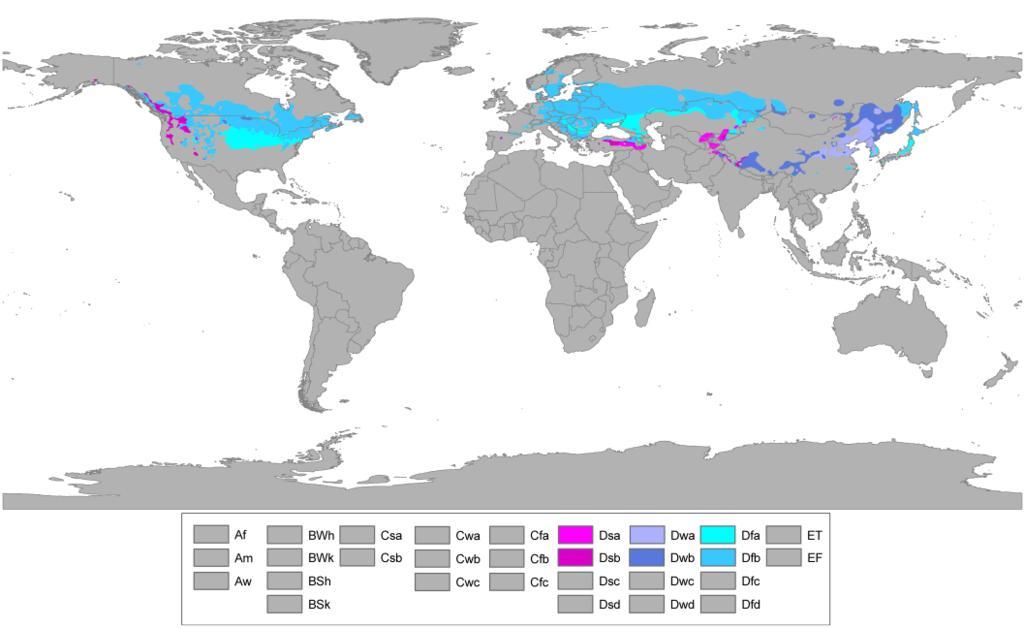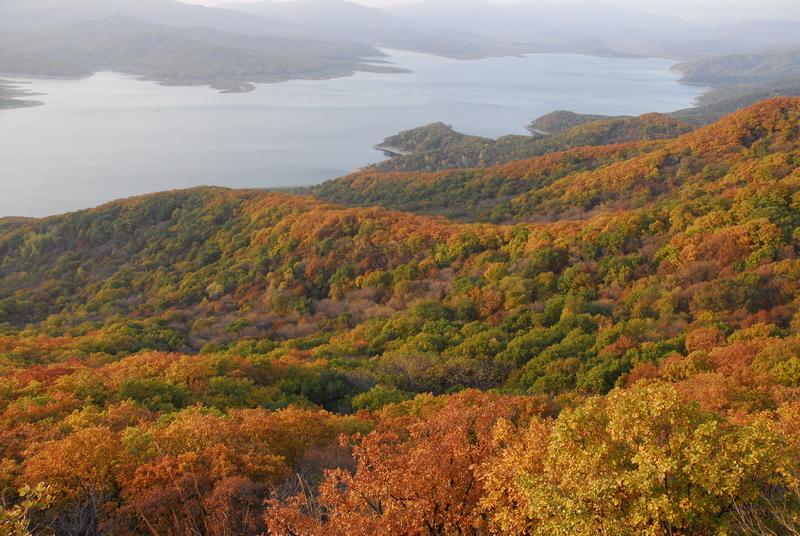What Is a Continental Climate?


The various types of global climates are categorized by different factors and systems. These can be dependent on their ecosystem type, location, altitude and other determinants. The continental climate is a category of climate which is determined by the Köppen climate classification. This is a system based on factors such as temperature patterns, but the resulting category is basically defined by the level of contrast in the seasons. This means a spring slowly warms into a hot summer which cools into a fresh autumn and a cold winter. Such seasonal variation allows for certain types of plant and animal life which are adapted to these conditions.
At thedailyECO, we discover more by asking what is a continental climate? We look at both the types and characteristics of continental climates, as well as the life areas with this climate can sustain.
What is a continental climate?
The continental climate is one where significant variance between seasons is recorded. In these cases, the four seasons of spring, summer, autumn and winter have definite characteristics which separate them starkly from each other. These differences are seen in variances in temperature, precipitation and growth, as well as many others.
Continental climates are so called due to their predominance in the middle latitudes of the Northern Hemisphere, an area dominated by the continents of Asia, Europe and North America. However, there are areas in the Southern Hemisphere which have continental climates, although they cover a much smaller total geographical area. In addition to well-defined seasons, summers tend to have more stable weather patterns than winter.
A map of the world with continental climates marked on it can be seen below:

Characteristics of a continental climate
While we have explained that continental climates are partly defined by their seasonality, this is not the only defining characteristic. The main characteristics of the continental climate:
- Present throughout almost the entire Northern Hemisphere, in central Asia, North America and Europe. These encompass territories such as Iran, the United States, Canada, Russia, Germany and China. Although to a much lesser extent, it also occurs in some territories of the Southern Hemisphere such as inland Argentina and in northern Africa.
- It is known as a temperate climate zone, since it is characteristic of mid-latitudes.
- It has clearly marked temperatures with rainy and hot summers and cold and dry winters.
- In spring, temperatures range between 5ºC and 15ºC with scarce rainfall, although it can reach 40 mm per month.
- In summer, maximum temperatures reach 32ºC. Rainfall ranges from 50 to 100 mm per month.
- When autumn arrives, the temperature begins to drop to a minimum of 10ºC and a maximum of 20ºC. The first frosts occur at the end of September.
- Winter is the coldest season, when there are severe frosts and snowfalls. During this season, temperatures reach a maximum of 10ºC and a minimum of -10 ºC meaning the temperature drops below zero.
Within the geographic areas which are said to have continental climates have areas within them which have climatic variations. You can learn more about once such variation with our article asking what is a mountain climate?

Types of continental climate
The characteristics of the continental climate have already been shown, but to understand it in more detail, it is important to know the different types that exist. These differ depending on their geographical location. Among the existing types of continental climate, the following are can be found:
- Continental Mediterranean climate: characterized by cold winters with frost and very hot summers. It occurs in northern Italy, the Saharan Atlas and the interior of the Iberian Peninsula, among others.
- Manchurian continental climate: present in northern China, North Korea and several Russian cities. It has an average annual temperature that ranges between 0ºC and 10ºC with an annual rainfall of around 500 mm.
- Humid continental climate: this is very similar to the Manchurian continental climate, although this one is a bit colder and drier. It is found in almost all of central and eastern Europe and also in the southeast of Canada.
- Arid continental climate: characterized by a cool climate with some frosts in winter and very hot summers. Some places where it occurs include Mongolia and Central Asia.
In addition, you can learn about the different types of climate in general with our related guide.
Flora and fauna of continental climate
The continental climate is known for its habitability for human settlements, but it is also home to a vast range of plant and animal life. While they may not be exotic animals like those typical of tropical climates, its biodiversity is great:
Plants of the continental climate
Deciduous forests predominate in continental climates. These are composed of tree species such as birches, aspens and hickories. Species such as oak and maple also exist in the types of forests typical of continental climates. They are tree species well adapted to the changes in temperature and rainfall that occur between seasons, with winter also being the hardest season and trees stop their activity to save energy.
When temperatures are not extremely hot and there is abundant rainfall, trees take advantage of the opportunity to grow. It is important to note that extremely high temperatures can lead to increased transpiration rates, which may cause trees to enter a stress response rather than dormancy, such as shedding leaves or reducing metabolic activity to minimize water loss.
To learn more about transpiration in plants, take a look at our article on the different types of stomata.
Animals of the continental climate
Animals that live in areas with this climate need to be able to adapt to the marked climatic changes that occur between the different seasons. Winter is the harshest and most unstable season. Many animals seek protection from the very low temperatures that can be reached, such as bears, wolves, deer, weasels, squirrels or reindeer. Birds also migrate to warmer areas. Learn more about migratory birds with our article on how birds are classified.
In addition, the animals of continental climates must reduce their activity to a minimum during winter. Some of them enter a period of hibernation to reduce energy since food is scarce at this time of the year. When spring arrives, the forest comes back to life in all its splendor.
Learn more about the different types of hibernating animals with our related guide.

If you want to read similar articles to What Is a Continental Climate?, we recommend you visit our Environment (other) category.








